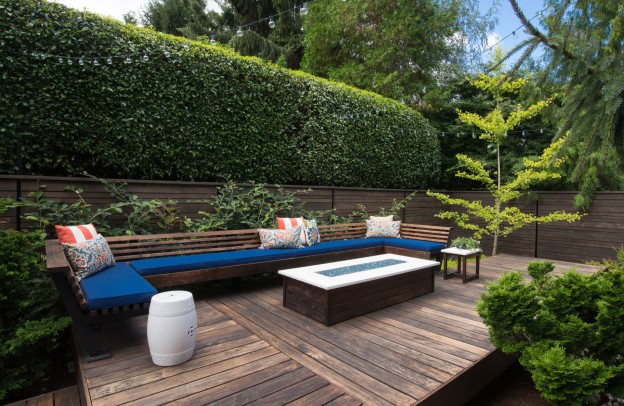As the leading supplier of decking across Shropshire and Staffordshire, Weston Sawmill knows a lot about keeping it looking spectacular, even in winter.
This is why we have put together this handy guide with plenty of information on decking maintenance during the coldest months of the year.
7 Essential Decking Maintenance Tasks
- Clear Debris – Autumn and winter can bring plenty of debris such as fallen leaves, twigs, moss and rubbish onto your decking. If left unattended, these organic materials will start to rot down, eventually creating a mulch which can penetrate the wood and lead to rot. We would advise grabbing a broom once or twice a month and sweeping up any debris from the decking area and put it in the composter or garden bin.
- Remove Any Planters or Seating – If you have heavyweight planters or seating, we would advise removing them from the decking and putting them in storage. If left out, they will create damp spots on the decking, underneath where they are placed. This leads to a build-up of moisture in this particular area which also leads to rot.
- Keep An Eye on Mould Build-Ups – Decking is one of the ideal environments for mould and mildew growth and build-ups. As it is situated close to the ground, water and moisture can quickly seep into the timber plus rainfall can, in some cases, settle. Other troublesome areas include the cracks and spaces between two boards. We would recommend giving this area a thorough clean to prevent any build-ups.
- Thorough Cleaning Process – A thorough cleaning of decking is needed in winter. For removing fallen debris that is too stubborn to move with a broom, try some hot and soapy water and elbow grease to get rid of it. Now you will need to pressure wash the surface to further clean the area and then scrub areas where dirt or moss have built up. The best way to prevent deterioration is by keeping your decking surface dirt-free.
- Remove Any Pet Fouling – If you have a dog or cat, make sure you clear up any mess they make on your decks as this can damage and stain the wood plus it can spread into other areas after rainfall. Another preventative method could be a temporary barrier or decorative fencing to stop them getting into this area.
- Paint with Timber Treatment – Wood preservatives are of the best ways to make sure your decking is long-lasting. Before applying treatment, check if the surface is clean and dry and remove any existing wood stain or paint. If any parts of your decks have started to deteriorate then you can always sand back to a better-quality surface. When the area is prepared sufficiently, apply the timber treatment with a brush and make sure it covers all the gaps and cracks.
- Apply Water Repellent – Roughly 3 days to a week after applying timber treatment, Weston Sawmill recommends applying a water repellent to help improve your decking’s life expectancy. Once applied, the wood is protected from moisture which also prevents the wood from decay. If left untreated, water will collect in cracks or gaps and will eventually penetrate the wood. Once trapped inside this will begin to cause rot.
Get in Touch for More Information
If you have any questions about decking from Weston Sawmill, please do not hesitate to contact us today and one of our team will be happy to help.

